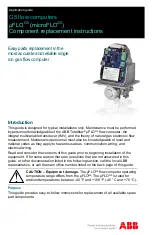Summary of Contents for EISA Desktop
Page 1: ......
Page 3: ...EPSON EISA User s Guide ...
Page 42: ...System board options continued 2 12 Running System Configuration ...
Page 43: ...System board options continued Running System Configuration 2 13 ...
Page 46: ...2 16 Running System Configuration ...
Page 119: ...System diagnostic error messages continued Running System Diagnostics A 9 ...
Page 134: ...Power on diagnostic error tone codes Troubleshooting C 3 ...
Page 135: ...Power on diagnostic error tone codes continued C 4 Troubleshooting ...
Page 182: ...EPSON EISA ...
Page 183: ......


































